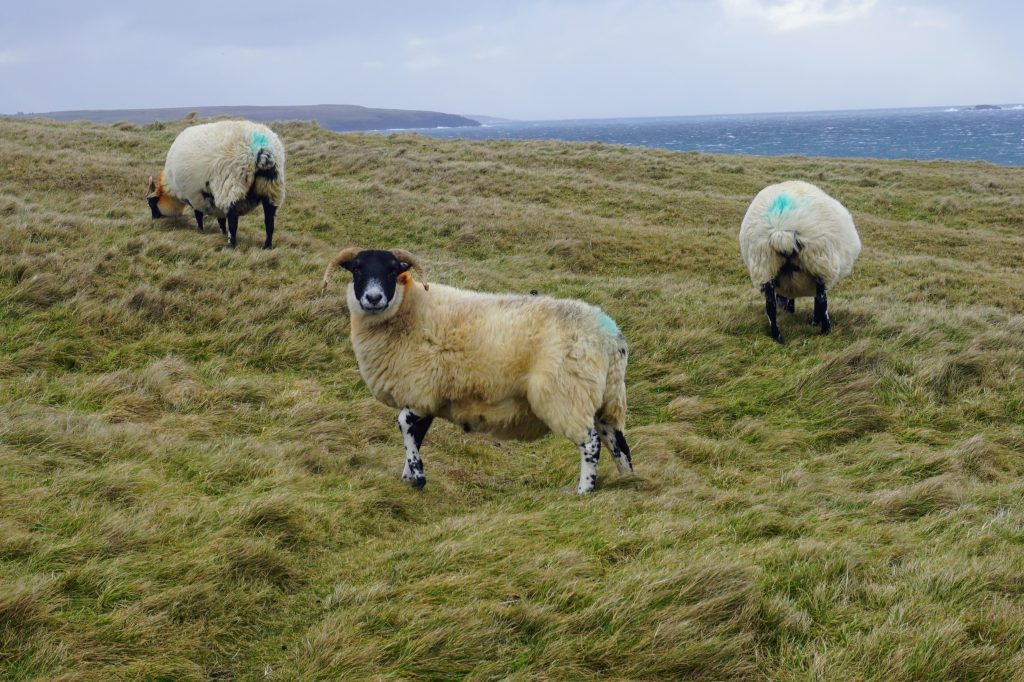Cath was feeling under the weather for our final full day on Lewis and Harris, but she told us of a scenic walk at the northern end of the island, taking in the Butt of Lewis. It was a short walk, about 6km, but the 50-70kph winds made it seem longer.

During the walk, we stayed away from the cliff edge because of the fierce gusts. At times, it was hard to stand still.
Despite the winds, we enjoyed seeing another part of the island. It was a surprise to see beaches and sand dunes on the walk. One thing we didn’t see were other walkers. Many people on the island are religious and Sunday is a day of rest. Shops don’t open and the public toilet we saw was closed! In some corners, even hanging clothes up outside is frowned upon.







After our walk, we drove towards the renowned bridge that connected the island to the Dùn Èistean archaeological site. There was a kilometre walk from where we parked. By this time, the winds were even more ferocious. Foam rose into the air as the waves crashed against the cliff. At one point, as the foam hit us, it looked as if horizontal snow was coming towards us from the sea.
When we got to the bridge, we were unsteady as we read the information board. It told the story of a fishing disaster (the “Cunndal drowning”) when two boat crews perished in 1885 near the site. Families and neighbours looked on “perfectly powerless to render the slightest assistance” because of the strong currents. The Highland News poignantly continued:
None, except those who are intimate with the inner life of the brave and pious population that skirt the coasts of our islands, know the deep poverty of by far the greater portion of them, or the straits to which they are often subjected in the struggle for existence. Every now and again, as a boat turns over with its living freight, the wail of the stricken households reaches the outer world and stirs it for a little, but for the most part our fisher-folk pursue their toilsome and dangerous occupations unthought of beyond their own limited circle. When most of us are sound asleep these stalwart fellows are tossing in their open crafts on the broad Atlantic, cold and wet, with their lives in their hands, earning what is at best but poor fare for those dependent upon them. […]
The Ness crews have left nine widows and twenty-two children. All these poor creatures are totally without means, a number of the families being landless.
The Highland News, 16 March 1885
Across the bridge, we could see the sea stack, a kind of isolated rock formation, where Dùn Èistean was located. We were tempted to cross the bridge but decided to be cautious because of the wind. This was nature at its rawest.





